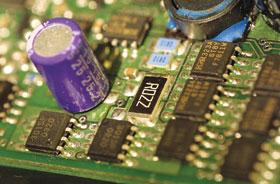

The state of automation is rapidly changing. One of the main reasons for this changing landscape is the advent of smart devices. ARC Advisory Group defines smart devices as having:
• Embedded computing and storage.
• Wired and/or wireless communications to the outside world.
• Ability to interact with the outside world (e.g. queries, setting parameters, interaction with other devices).
• Ability to perform autonomous actions such as control.
• Some degree of descriptive or predictive analytics capabilities.
Smart sensors add value for users
There are many examples of smart sensors that add value to users of automation technology. Many conventional sensors now have additional smart features such as pressure sensors that detect electrical loop issues, temperature sensors that can detect thermocouple degradation and radar level gauges that include self-calibration capabilities. Vibration sensors can perform fast Fourier transform (FFT) of the data to compute the health of equipment by performing analysis of the various frequencies of the vibrations right on the sensor. Smart sensors can be attached to the electrical line of industrial electrical motors to compute power factors – the efficiency of converting electrical energy to mechanical energy – and the probability of failure – all from analysis performed right on the sensor.
Smart sensors have some unique capabilities
Smart sensors represent a natural technology evolution from simple, equipment-mounted mechanical indicating sensors; to ‘dumb’ pneumatic and analog electronic sensors capable of transmitting raw measurements to another device for ‘massaging’ and transforming: to today’s microprocessor-enabled smart field devices with on-board processing capabilities and often full, bidirectional digital communications.
Today’s smart sensors can generate 20 to 50 times more readings beyond the primary value. Rather than sending raw, unprocessed data, today’s smart sensors also produce more refined readings. For example, an ultrasonic corrosion detection tool that sends wall thickness, rather than the raw ultrasonic transducer waveforms. Another major complication is that business rules are now stored in the device rather than in a centralised system. This allows the smart device to perform autonomous actions based on those business rules, for example the pump can be turned off if the tank level reaches a certain level. As devices get smarter, they might not even transmit the raw data; just the results of the analytics performed on those data. For example, a hyperspectral camera might transmit gas levels rather than just the video images, which would require further analysis.
All this means that smart devices are uniquely qualified to be key enablers for the industrial Internet of things (IIoT). When you consider the key elements of the IIoT – sensors, networks, big data, analytics and visualisation – smart sensors contribute to all these areas.
Distributed acoustic sensing provides a good example. Here a fibber cable is inserted into a producing oil or gas well and on-board processing transforms light pulses into a measure of acoustic energy at specific points about every metre along the length of the cable. These measurements are then used to optimise production by improving visibility into the reservoir behaviours. Since these systems can acquire over a terabyte of data a day, this new sensor is bundled into a smart sensor package that provides methods for networking, handling big data, computing analytics and visualising these data.
Smart sensors present unique challenges
The introduction of these smart field devices poses some significant challenges for technology users. With so much intelligence being pushed to the field device, end-user companies need to distribute, verify and audit those rules in a distributed environment. While reasonably straightforward to do in a centralised system, managing those business rules in a non-centralised world is far more challenging.
The networks for gathering and backhauling readings must also be designed to accommodate all the secondary readings being generated. The classical ISA 95 security model in which all the data are funnelled through the DCS and process control network does not scale easily. Instead, an enterprise approach is needed to avoid overwhelming the process control system with this tidal wave of new non-control data.
Another key issue is that while the smart devices now generate and communicate sensor health readings, an enterprise device management solution is needed that can collect and analyse this sensor health data. Such systems could significantly improve the reliability of these smart sensors. Finally, systems need to be designed to collect, process and transform all this additional secondary, non-control data into actionable information to help improve the performance of the plants and associated assets. Traditional systems greatly underutilise such data.
For more information contact Paul Miller, ARC Advisory Group, +1 781 471 1141, pmiller@arcweb.com, www.arcweb.com

© Technews Publishing (Pty) Ltd | All Rights Reserved